Flea Beetles
Palestriped flea beetle (Systena blanda)
Western black flea beetle (Phyllotreta pusilla)
Other flea beetles in the Chrysomelidae tribe Alticini
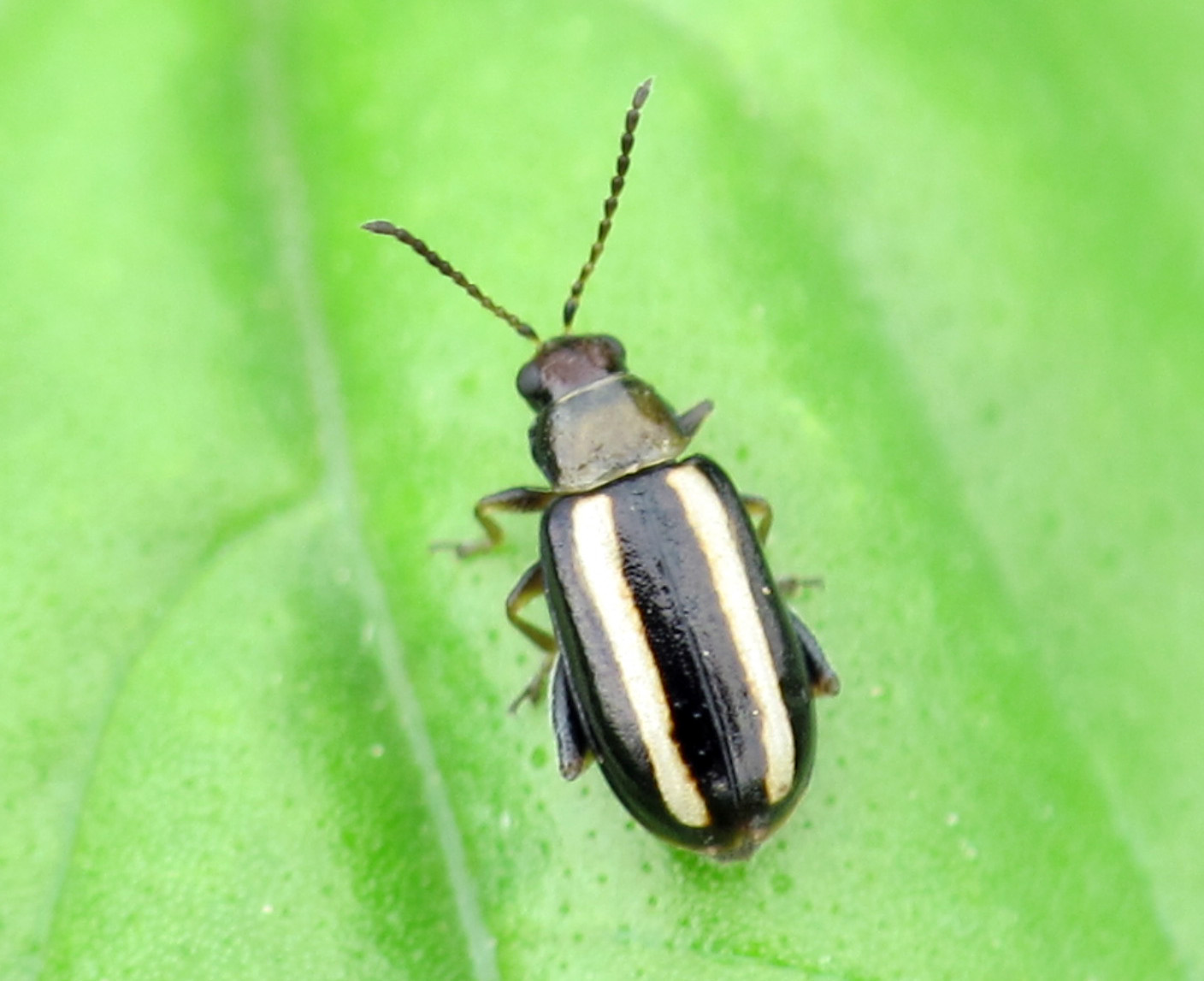
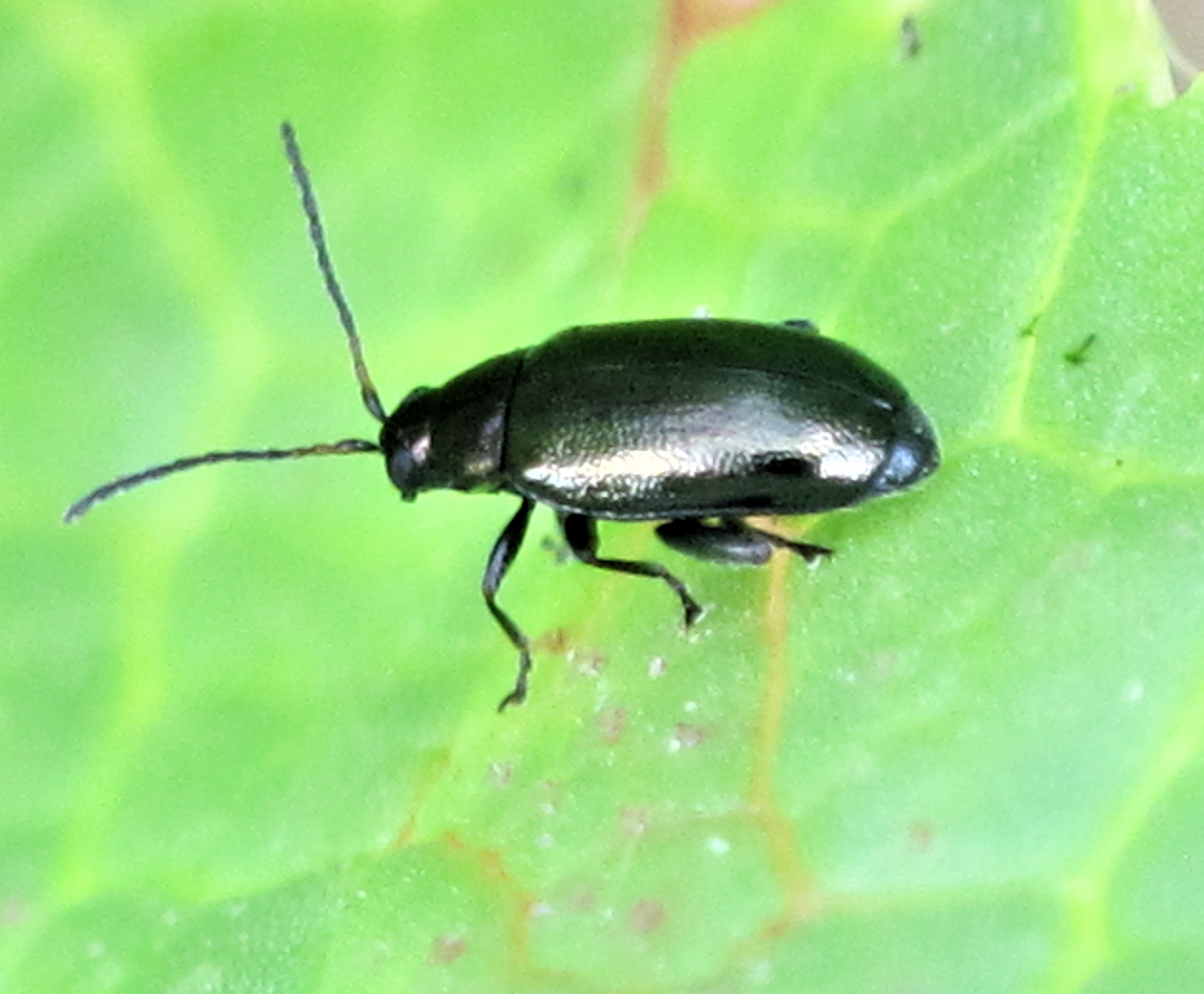
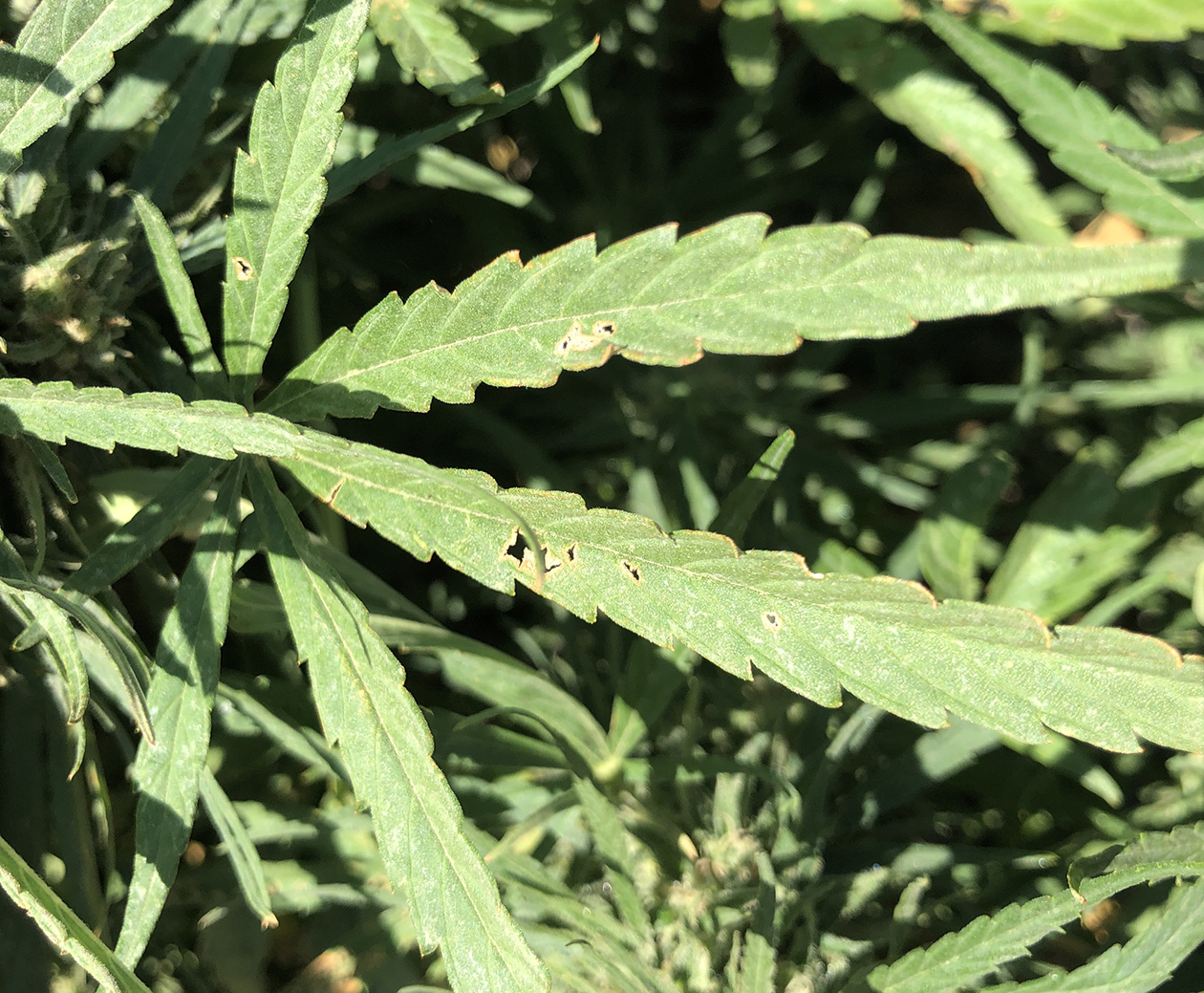
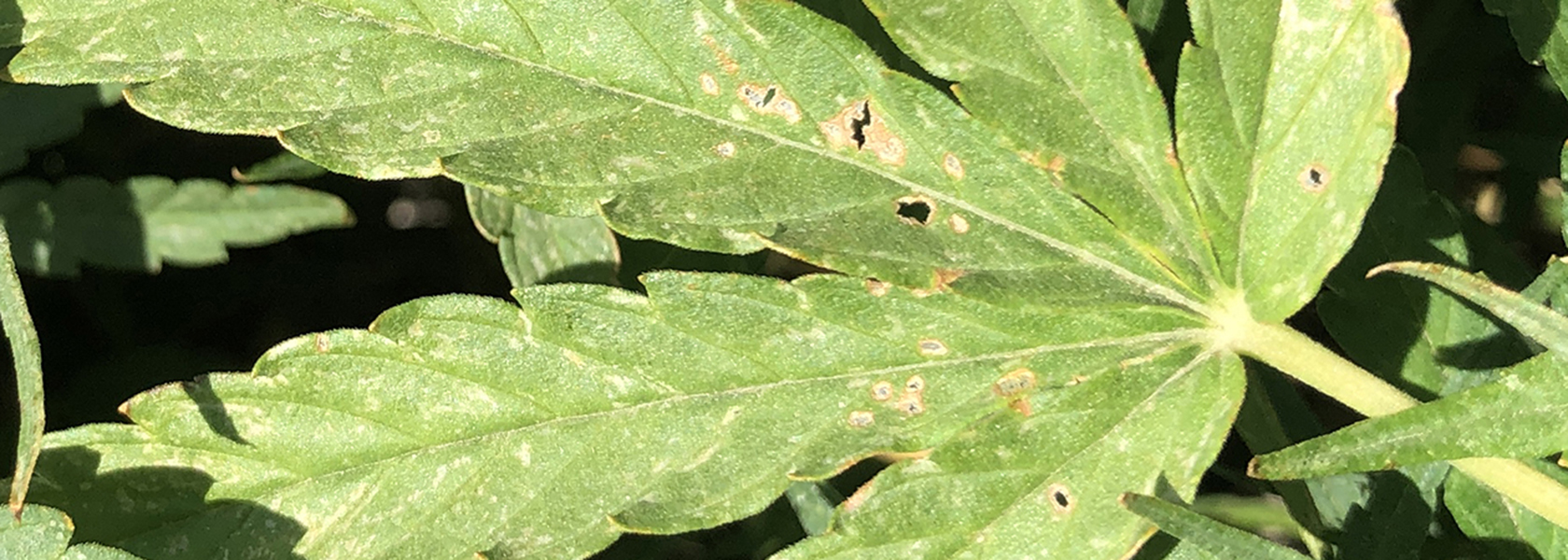
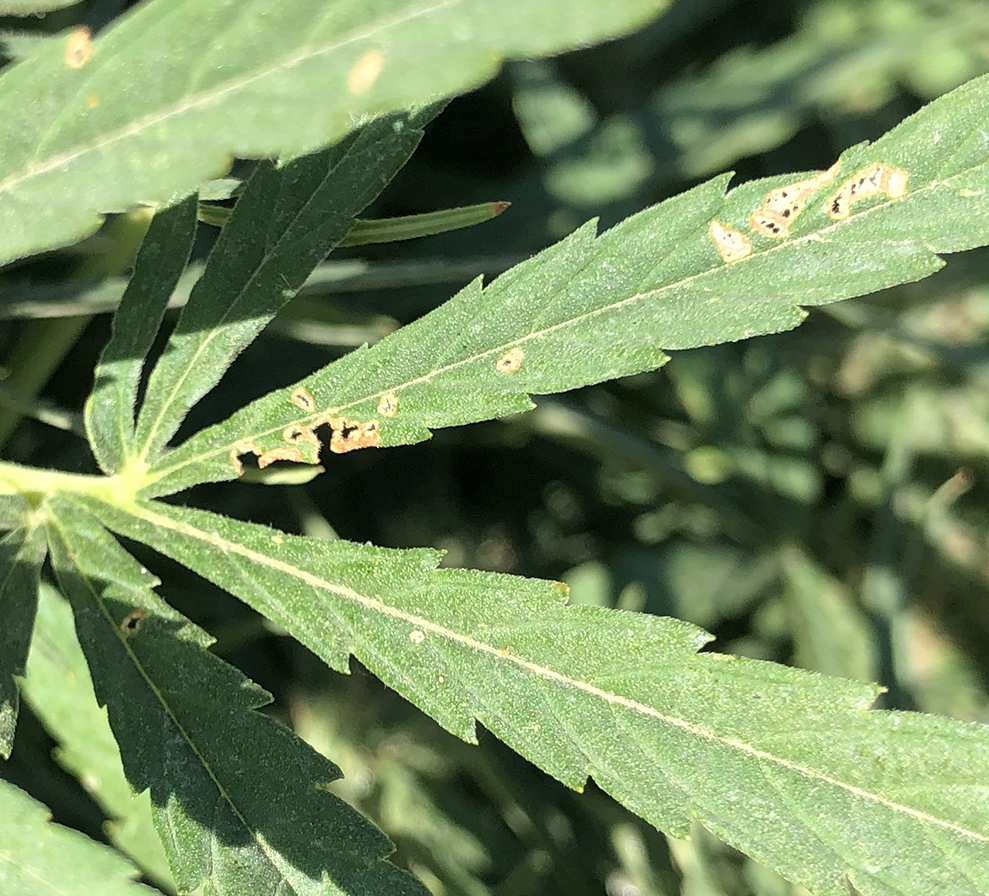
Hosts
- Brassica Crops
- Leafy Greens Crops
- Solanaceae Crops
- Root Crops
- Cucurbit Crops
Description
Beetles are tiny with enlarged hind legs for jumping. Adults have metallic bodies that range in color from brown, green, metallic-blue to black; some have stripes or spots. Larvae primarily live in soil and are small, white, and worm-like with a brown head.
Life Cycle
Egg| Larva | Pupa | Adult
- 1-3 generations per season.
- Overwinter as adults in protected
sites. - Adults emerge in spring and feed on
weeds or other hosts. - Adults feed, mate, and lay eggs in the
soil near the base of host plants. - Larvae feed below-ground on roots.
Damage Symptoms
Adults and larvae feed with chewing mouthparts. Adult feeding causes shallow pits and small, round holes in foliage. Larval feeding generally does not cause serious damage and may result in a loss of plant vigor when root hairs or fine roots of seedlings are consumed. Young plants/cotyledons are most susceptible to flea beetle damage.
Time for Concern
Early April through August and early stages of plant development.
When and Where to Scout
- Peak adult activity is April to mid-June.
- In spring, monitor young plants twice a week for flea beetles or round holes or pits in leaves.
- Inspect crops for adult flea beetle injury near field borders with weeds, especially mustards.
Threat Level
Medium for young plants. Both larval and adult damage is generally considered to be insignificant to hemp growth, but if high enough numbers of adult flea beetles occur on seedlings, plants can become stunted or be killed.
Occurrence in Utah
Damage commonly found in field production, but rarely warranting treatment.
Management
The high mobility of flea beetles can make management more challenging. Understanding their biology and life cycle will help identify effective strategies and optimal timings to reduce their negative impacts. When management of flea beetles is warranted, a combination of cultural, physical, biological, and chemical options should be used.
- Keep crop area weed-free.
- Eliminate old crop debris and other vegetative debris.
- Plastic mulches can interfere with egglaying and soil-inhabiting life stages.
- Approved insecticides are available. Apply to foliage when beetles are present, especially on young, susceptible seedlings or plants. Reapply as seedlings/plants grow or as recommended on the label to provide protection
When to Consider Treatment
In seedlings, when there are 1-5 flea beetles per plant or defoliation reaches 10-30%.
Look-alikes
Other small leaf beetles (family Chrysomelidae) or other beetles.
Insecticides
Although foliar application of insecticides is the most common management tactic for flea beetles, insecticides should only be used if necessary. Since plants produce continuous new growth and the highly mobile beetles can rapidly reinvade plantings, insecticides may have to be applied more than once to cover the plant’s susceptible period.
| Utah-Registered Product | Active Ingredient(s) | Notes |
|---|---|---|
| Aza-Direct Biological Insecticide | azadirachtin | |
| AzaGuard | azadirachtin | |
| AzaSol | azadirachtin | |
| Azatin O Biological Insecticide | azadirachtin | |
| Azatrol EC Insecticide | azadirachtin | |
| Azera Insecticide | azadirachtin | |
| Bayer Advanced NATRIA Insecticidal Soap Ready-To-Use |
potassium laurate | |
| Bonide All Seasons Horticultural & Dormant Spray Oil Concentrate; Ready to Spray | mineral oil | |
| Bonide Diatomaceous Earth Crawling Insect Killer | diatomaceous earth | Greenhouse use only. |
| Bonide Rose Rx 3 in 1 Concentrate | clarified hydrophobic extract of neem oil | Greenhouse use only. |
| Botanigard Maxx | pyrethrins | Greenhouse use only. |
| Brandt Ecotec Plus | rosemary oil | Greenhouse use only. |
| Bug Buster-O Extinguish Ant Bait | pyrethrins | Greenhouse use only. |
| Deadzone | diatomaceous earth | |
| Dr. Earth Final Stop OMRI Fruit Tree Insect Killer (RTU); Concentrate | rosemary oil | Outdoor use only |
| Dr. Earth Final Stop OMRI Rose and Flower Insect Killer (RTU) | rosemary oil | Ground application only to non-blooming plants. |
| Dr. Earth Final Stop OMRI Vegetable Garden Insect Killer (RTU); Concentrate | rosemary oil | Only on non-blooming plants. |
| Dr. Earth Final Stop OMRI Yard and Garden Insect Killer (RTU); Concentrate | rosemary oil | |
| Dr. Earth Final Stop ProActive Yard & Garden Insect Killer (spray) | rosemary oil | |
| EcoWorks EC | neem oil, cold pressed | |
| Evergreen Crop Protection EC 60-6 | pyrethrins | |
| Ferti-lome Fruit Tree Spray | pyrethrins | |
| Grandevo CG; WDG | Chromobacterium sub strain praa4-1 cells |
|
| Leaf Life Gavicide Green 415 | mineral oil | Greenhouse use only or transplants intended for field planting. |
| Mite-E-Oil | mineral oil | Greenhouse use only |
| Molt-X | azadirachtin | |
| Natural Guard Brand Neem | clarified hydrophobic extract of neem oil | Only for outdoor use, or transplants intended for outdoor fields. |
| Neemix 4.5 Insect Growth Regulator | azadirachtin | |
| Ortho Tree & Shrub Fruit Tree Spray Concentrate | clarified hydrophobic extract of neem oil | |
| Pycana | pyrethrins | Greenhouse use only. |
| Pyganic Crop Protection EC 1.4 II; 5.0 II | pyrethrins | |
| Pyrethrum TR Total Release Insecticide | pyrethrins | |
| Rango | neem oil, cold pressed | Use prior to flowering. |
| Safer Brand #567 Pyrethrin & Insecticidal Soap Concentrate II | potassium salts of fatty acids | Use prior to flowering. |
| Safer Brand Neem Oil Concentrate | clarified hydrophobic extract of neem oil |
|
| Safer Brand Yard & Garden Insect Killer II | potassium salts of fatty acids | |
| Surround WP Crop Protectant | kaolin | |
| Tersus Insecticide | pyrethrins | |
| TriTek | mineral oil | |
| Whitney Farms Insecticidal Soap | potassium laurate | |
| Xpectro OD | pyrethrins |
Photo Credits
- USU Extension IPM Program

